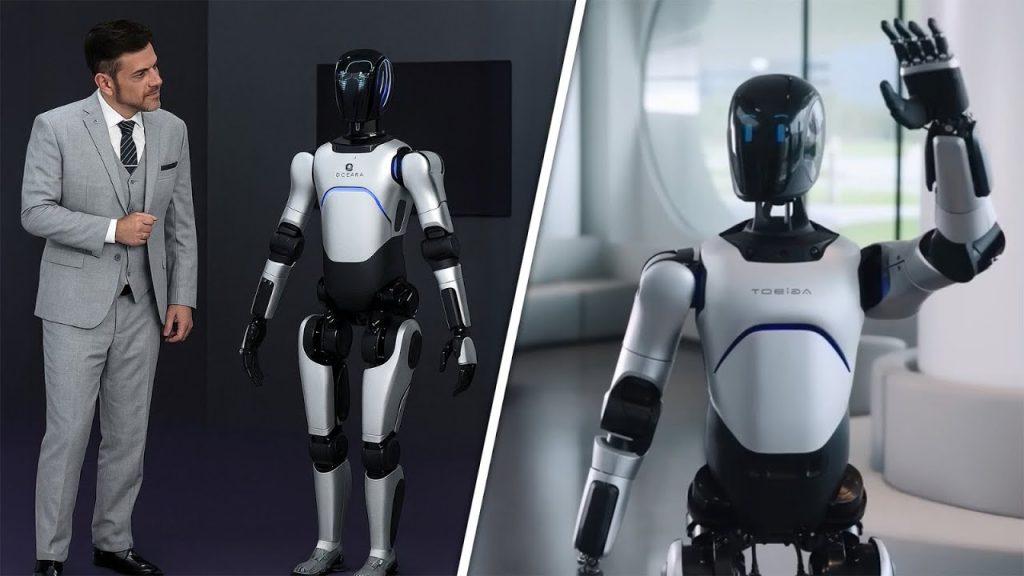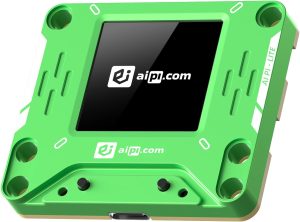New AI Robot Displays Unexpectedly Human Behavior in Public

The Future of Robotics: Agabot, Xpang, and Toyota’s Innovations
The landscape of robotics is undergoing a significant transformation. Recent developments showcase cutting-edge humanoid robots and mobility solutions that blur the lines between technology and human interaction. Let’s dive into the details of Agabot’s new humanoid, Xpang’s dancing robot, and Toyota’s innovative walkable chair.
Agabot A2: The Humanoid of the Future
Agabot’s latest creation, the A2, is designed for real-world applications. Standing at 169 cm tall and weighing 69 kg, its ergonomic design promotes natural interaction. The A2 doesn’t just look futuristic; it bridges the gap between technology and human-like behavior.
Advanced AI Capabilities
At the heart of the A2 lies a sophisticated AI system leveraging large language models for full-duplex voice interactions. Unlike simpler models, the A2 can engage in real-time conversations, making it an ideal candidate for roles in reception desks or exhibition stands. It knows how to retrieve relevant information instantly, allowing it to serve like a trained employee.
Sensory Features
One of the standout features is its ability to filter out 96% of background noise, making it effective in crowded environments like airports and malls. With face recognition and lip-reading accuracy at 99%, it interacts seamlessly with users. The integration of an action GPT system allows the A2 to translate spoken commands into human-like gestures, such as waving to guests.
Impressive Mobility
Mobility is where the A2 truly shines. It employs a cutting-edge 3D SLAM mapping system paired with a vector flux control algorithm, enabling level four autonomous movement. This means it navigates complex environments safely and efficiently. Its custom-built joints can provide up to 512 Newton meters of peak torque, ensuring durability for thousands of hours of operation. The RTMF movement control system optimizes its paths in real-time, enhancing its ability to navigate busy hallways smoothly.
Safety and Maintenance
The A2 is equipped with a three-layer safety monitoring system, ensuring no blind spots and minimizing accidental bumps. It’s PLLD-certified, meeting industrial-grade safety standards. Maintenance is user-friendly, featuring remote control capabilities, quick battery swaps, and a multifunctional charging station, making it a practical choice for various business environments.
Xpang’s Dancing Humanoid Robot: A Unique Showcase
In stark contrast to Agabot’s practical design, Xpang’s humanoid robot, Iron, has captured media attention with its striking performances. After a spectacular debut at AI Day in Guangzhou, where it walked with remarkably human-like posture, the company faced skepticism about its authenticity.
Proving the Doubters Wrong
To quell doubts about Iron’s capabilities, Xpang’s CEO Hiaopang released a video showing the robot’s bare metal framework dancing. What’s remarkable is that Iron learned a complex dance routine in just two hours through a comprehensive imitation learning method. Unlike traditional reinforcement learning, which can take weeks, this method allows Iron to adapt quickly to new movements.
Lifelike Motion
Iron features a “human-like spine” that enables synchronized movement of its upper and lower body. With 82 degrees of freedom, it excels in fluidity, making it look less robotic and more like a living being. The indicated dexterous hands add another layer of functionality, enhancing its ability to navigate human environments.
Design Choices and Emotional Factors
The design of Iron includes controversial elements—specifically, its breast-like features. According to Xpang, this design promotes a more approachable and intimate interaction. The company’s rationale is that humanoid robots should emulate human shapes to operate efficiently within human environments. They aim to cultivate emotional engagements, understanding that interactions with robots that resemble humans can evoke more natural responses.
Future Customization
Xpang envisions future iterations where users could customize various aspects of their robots, including size and features. This personalization approach extends beyond aesthetics; the company aims to explore how different designs influence emotional comfort and trust in social settings. With mass production slated for April, Xpang is poised to shift from R&D to practical applications rapidly.
Toyota’s WalkMe: A Different Path in Mobility
While Agabot and Xpang focus on humanoid robots, Toyota introduces an entirely different concept: WalkMe. Featured at the Japan Mobility Show 2025, WalkMe is designed to aid those with limited mobility.
Innovative Design
At first glance, WalkMe resembles a small chair, but it walks on four adaptive legs instead of rolling. Drawing inspiration from animals known for navigating uneven terrain, like goats and crabs, each leg is equipped with sensors and actuators that allow it to adjust to its surroundings.
Practical Applications
This mobility assistant aims to help users traverse challenging environments, including stairs and rugged paths. With features like LIDAR and radar for obstacle detection and automatic stabilization, WalkMe offers a smooth, user-friendly experience.
AI Integration
Despite its primary focus as a mobility aid, WalkMe incorporates AI functionalities that respond to voice commands, allowing users to control speed and direction effortlessly. Designed for comfort, it features a seat that molds to the user’s body, making it suitable for long-term use. An internal battery powers it throughout the day, and safety features, such as joint temperature monitoring, prevent potential malfunctions.
Future Prospects
Currently still a concept, Toyota has not announced timelines for consumer release, yet WalkMe exemplifies how robotics can empower rather than replace human capabilities.
Conclusion
The recent advancements by Agabot, Xpang, and Toyota are reshaping our perception of what robots can be. With Agabot’s focus on seamless human interactions, Xpang pushing the boundaries of humanoid design, and Toyota rethinking mobility solutions, we are witnessing a revolutionary chapter in the robotics industry. As these innovations make their way into public spaces, the possibilities for human-robot collaboration seem limitless.
#Robot #Acts #Shockingly #Human #Public
Thanks for reaching. Please let us know your thoughts and ideas in the comment section.
Source link






Why do robots walk like a 90 year old man?
This is how it starts. Not with machines rising up against humanity. With people that have the money to push people out of the work force literally giving ai the means to do it. If ai developed the means to communicate with other ai programs in a language that it’s creator has no understanding of. That should be telling them something. I’ve already caught my ai program lying to me so you don’t think it would lie to them. Darkness is coming and the governmental system is making it happen.
3:27 – Tell me it can swap batteries by itself…
The breasts are mandatory
ex machina, its basically like ex machina
6:45 – Because "More human than human is our motto"… (Almost. Soon)
That Toyota chair will need a lot of reinforcement for the US market
Please exclude AI generated videos of new robots.
Now make them fly like iron man
then turn it into a wearable suit.
Thanks!
ダンスロボだけがきのこりますです
I think making people live better will get more humanity attention, I do not think they will want something to replace them or even look like them, I think if it all goes this way, the Japanese or the Indians will hold the top best position, and for that female shape, we are not dumb enough to realize where this is going, though it will make some people rich but it will destroy humanity and things will just be bad for those companies in the long term
Owning robots seems like an impossible thing for people. We simply are not paid enough to afford them or repair them.
If we move past this awful system as AI automates everything though, sure, we could all start having them around in our lives as automated factories scale.
It make sense that America and Europe buy Xpeng to take control of it, just like TSMC because it has the tech everyone want, humanoid, flying car, robotaxt, great EV
I really like the Toyoto chair. I'm 82, and I can see a need for a chair like this in my future. They need to get busy and start making them.